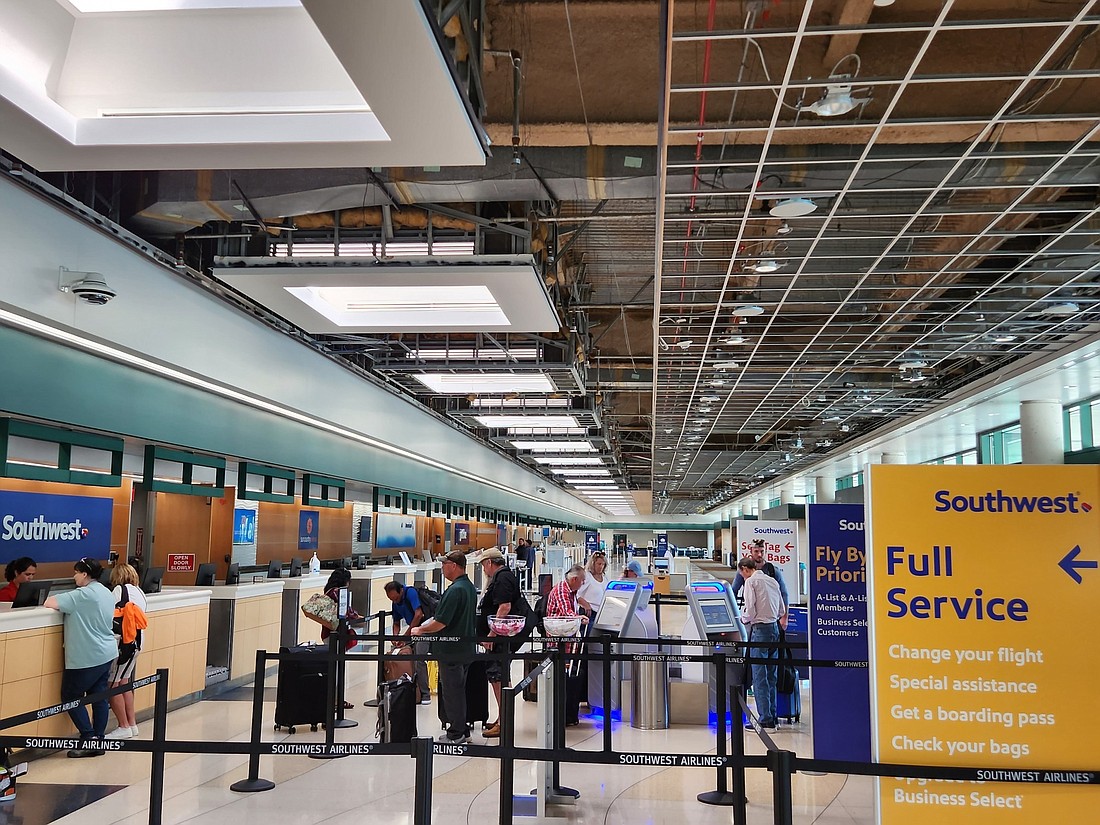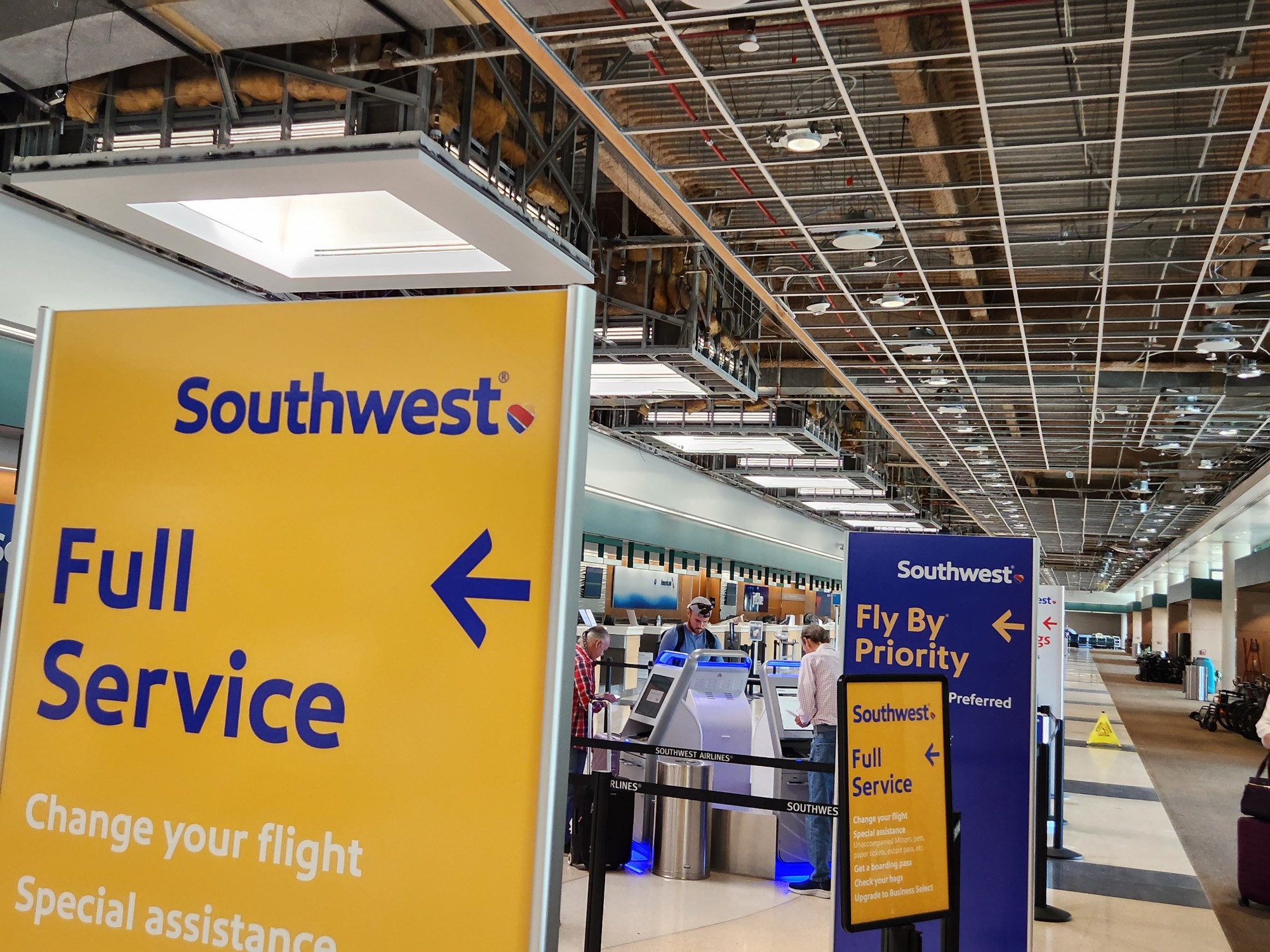- November 26, 2024
-
-
Loading

Loading

Aside from missing ceiling tiles in the passenger ticketing area, everything appeared normal at Sarasota-Bradenton International Airport less than 48 hours after Hurricane Ian ravaged much of the Southwest Florida Gulf Coast.
Departing passengers were saying their goodbyes at the curb outside the terminal, others were printing boarding passes at kiosks and checking bags. Monitors displayed arrivals and departures — most of them at the time still cancelled — and although most stores and restaurants remained closed, the pulse of air travel felt normal.
It was anything but normal in the immediate aftermath of Ian. On Wednesday afternoon, tropical storm-force winds burrowed beneath a 100-by-100-foot section of the fabric membrane covering the ticketing area, peeled it back and, for several hours, rainwater leaked inside. Once the storm passed, airport personnel and contractors sprung into action to dry up, clean up and remove the ceiling tiles as commercial airline operations were set to resume Friday afternoon.
The emergency repairs posed an additional challenge to the already complex process of closing and reopening an airport, one that SRQ President and CEO Rick Piccolo has experienced before. More than locking the doors and covering computers and equipment to prevent damage, the entire airfield must be cleared of all aircraft and equipment, jetways secured, dozens of hangars locked down and more.
“We have a hurricane plan. We have a disaster plan. Every airport has that,” Piccolo said. “We sit down with the airlines as it approaches and we have regular meetings as the storm gets closer. If we feel the track is going to hit us, we make sure everything that the airlines have on the ramp is put away and carts are under cover as much as possible.”
What can’t be put away are the mobile jet bridges. Those are tied down to bolts imbedded in the concrete to keep them secure. Inside, all the security equipment, computers and kiosks are covered with heavy plastic to protect them from leaks, doors are sandbagged to repel wind-driven rain and all non-essential personnel are sent home.
“The only people who are on the airport are about 40 employees, which include police and fire operations, and also myself,” Piccolo said. “I was here from 4 in the morning Wednesday until about 10 Thursday morning. I went home for a couple hours to check on my house, took a shower and came back.”

Piccolo was in the terminal when the room membrane peeled back and water began leaking through the sub-roof, bringing down ceiling tiles, insulation and other materials onto the terminal floor.
Cleanup and drying operations began immediately, and by 6 p.m. Thursday, with the first flight scheduled to arrive at 3:45 p.m. Friday and departures shortly thereafter, the decision was made to remove the entire ceiling in the ticketing area rather than risk others potentially falling on passengers.
“You can’t let passengers come in and we just think we got all the bad ones, so we decided to take the whole ceiling down,” Piccolo said.
On the airfield, reactivation protocols include clearing the runways and tarmac of debris, ensuring all lighting is functioning and aviation-related instruments are operational.
During the storm, SRQ was never in danger of losing power. Two electric feeds serving the airport provide redundancy, and if that fails backup generators can power the entire facility.
“We have generators to power everything at this airport inside the terminal and everything on the airfield,” he said. “Everything has backup generators. The tower has backup generators and so does the radar, so if electric feeds fail we’re still good to go.”
At 3:45 Friday afternoon, the first passengers arrived on a Southwest Airlines flight from St. Louis. The first departure, also on Southwest, was at 4:35 p.m., bound for Chicago-Midway. Most airlines serving SRQ repositioned aircraft and resumed flights over the weekend.
Meanwhile, recovery continues from what could have been greater damage at SRQ had the Ian taken more northerly track.
“We’ll have some big projects because we will have to put a whole new ceiling in there and a new roof over the ticket wing,” Piccolo said.